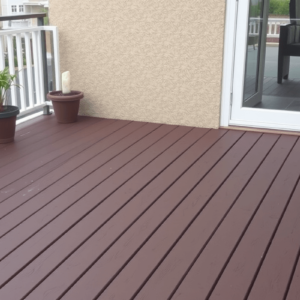Comparing Best Value Composite Fencing with Traditional Options
Introduction
In recent years, homeowners have been increasingly turning to composite fencing as a durable and low-maintenance alternative to traditional wood and vinyl fences. Composite fencing is made from a mixture of wood fibers and plastic, which provides it with enhanced durability, resistance to weather conditions, and minimal maintenance requirements. In this article, we will explore the key differences between best value composite fencing and traditional wood and vinyl fences in terms of longevity, maintenance requirements, environmental impact, and overall cost-effectiveness.
Longevity
Composite fencing stands out for its exceptional longevity compared to traditional options. According to a study published in the Journal of Materials Science, composite materials can last up to 30 years or more with proper care, significantly outlasting wood and vinyl fences. Wood fences typically require replacement every 10-15 years due to rotting and insect damage, while vinyl fences may need replacement after 20-30 years due to fading, cracking, and warping under extreme weather conditions. Composite fencing, on the other hand, maintains its appearance and structural integrity over time, making it a long-term investment for homeowners.
Maintenance Requirements
One of the most significant advantages of composite fencing is its minimal maintenance requirements. Unlike wood fences, which require regular painting or staining to prevent rotting and decay, composite fencing does not require any painting or staining. Additionally, composite fencing is resistant to mold, mildew, and insects, reducing the need for ongoing treatment. Vinyl fences also require less maintenance than wood fences, but they are prone to fading and scratching, which can affect their appearance over time. Composite fencing, however, retains its color and texture without fading, ensuring a consistent aesthetic appeal throughout its lifespan.
Environmental Impact
When considering the environmental impact of different fencing materials, composite fencing emerges as a sustainable choice. The production process of composite fencing uses recycled wood fibers and plastic, reducing waste and promoting recycling. Moreover, composite fencing does not require frequent replacement, which reduces the amount of waste generated over time. On the other hand, wood fences contribute to deforestation and require regular chemical treatments, which can be harmful to the environment. Vinyl fences are made from PVC, a non-biodegradable material that can release toxic chemicals when disposed of improperly. Therefore, composite fencing offers a more eco-friendly solution for homeowners looking to reduce their carbon footprint.
Cost-Effectiveness
While the initial cost of composite fencing may be higher than that of wood or vinyl fences, it proves to be more cost-effective in the long run. A study conducted by the National Association of Home Builders found that the total cost of ownership for composite fencing is lower than that of wood and vinyl fences due to its longer lifespan and reduced maintenance requirements. Over time, the savings on maintenance and replacement costs can offset the higher upfront investment. Furthermore, composite fencing adds value to a property, making it an attractive option for homeowners looking to enhance their home’s curb appeal and resale value.
Conclusion
When choosing the right fencing material for your home, it is essential to consider factors such as longevity, maintenance requirements, environmental impact, and overall cost-effectiveness. Best value composite fencing offers a superior combination of these attributes, providing homeowners with a durable, low-maintenance, and eco-friendly solution. While the initial cost may be higher, the long-term benefits and savings make composite fencing a worthwhile investment for those seeking a high-quality fence that will stand the test of time.





Reviews
There are no reviews yet.